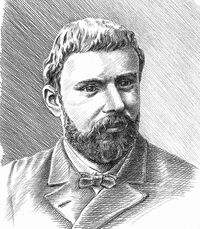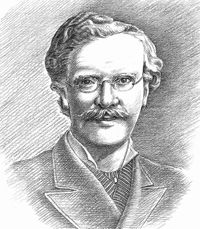Birth of a Theorem: A Mathematical Adventure (32 page)
Read Birth of a Theorem: A Mathematical Adventure Online
Authors: Cédric Villani
Tags: #Non-Fiction, #Science, #Biography

The Fields Institute for Research in Mathematical Sciences—which plays no role in the awarding of the Fields Medal—is located in Toronto, and regularly sponsors colloquia on all sorts of topics.
Jean-Claude and I had a good laugh. But only a month and a half later, by pure coincidence, the invitation arrived.
* * *
Date: Tue, 22 Sep 2009 16:10:51 -0400 (EDT)
From: Robert McCann
To: Cedric Villani
Subject: Fields 2010
Dear Cedric,
Next fall I am involved in organizing a workshop on “Geometric Probability and Optimal Transportation” Nov 1-5 as part of the Fields Theme Semester on “Asymptotic Geometric Analysis”.
You will certainly be invited to the workshop, with all expenses covered, and I hope you will be able to come. However, I also wanted to check whether there is a possibility you might be interested in visiting Toronto and the Fields Institute for a longer period, in which case we would try to make the opportunity attractive.
Please let me know,
Robert
New York
October 23, 2009
Back home, about a week ago, the children made the acquaintance of a baby wild boar their uncle had captured with his bare hands. How I wish I could have been there!
But I’d convinced myself that during their fall break from school my time would be better spent lecturing in the United States—a grueling tour that will take me through half the country in just ten days. Already I’ve been to Cambridge, paying visits to MIT (in the footsteps of Wiener and Nash!) and Harvard. Now I’m in New York. I console myself with the thought that once I return to France I’ll be able to go see the little piglet and take him for a walk in the woods.
On opening my email this evening, my heart skipped a beat: a message from
Acta Mathematica
, considered by many to be the most prestigious of all mathematical research journals. This is where Clément and I submitted our one-hundred-eighty-page monster for publication. No doubt that’s what they’re writing me about.
But … it’s not even four months since we submitted it! Considering the size of the manuscript, it’s much too soon for the editorial board to have decided in our favor. Only one possible explanation: they’re writing to say that the article has been rejected.
I open the message, skim the cover letter, feverishly scroll through the attached referees’ reports. Lips pursed, I read through them again, this time more carefully. Six reports, very positive on the whole. Not a word to be said against us, except … sure enough, always the same misgiving: it’s the analyticity assumption that bothers them—that and the limit case in large time. Always the same two questions. I’ve already had to respond to them dozens of times over the past few months—and now it looks like they’ve sunk our hopes of publication! The editor who signed the letter isn’t persuaded that our results are definitive, and because the manuscript is so long he feels obliged to hold it to a stricter standard of review than is customary.
But this simply isn’t right!! After all the ingenuity we’ve displayed, all the new ground we’ve broken, all the technical obstacles we’ve managed to overcome, all the days of hard work that stretched on late into the night, night after night—and
still
it’s not good enough for them?? Give me a
break
, for Chrissake!
But then … I noticed another message, informing me that I’d just won the Fermat Prize. Named after the great Pierre de Fermat, whose mathematical enigmas infuriated the whole of seventeenth-century Europe; the prince of amateurs, as he was known, who revolutionized number theory and the calculus of variations, and laid the foundations of modern probability theory. Since 1989 the prize established in his name has been awarded every two years to one or two mathematicians under the age of forty-five who have made major contributions in one of these domains.
The news comes as a great consolation. Even so, it isn’t enough for me to get over the frustration of seeing our article turned down. To get over that, I’d need a big long hug. At a minimum.
* * *
In 1882, Gösta Mittag-Leffler persuaded a group of fellow mathematicians in his native Sweden and the other Scandinavian countries to create a review devoted to publishing research of the highest quality. It was named
Acta Mathematica
, with Mittag-Leffler as its first editor-in-chief.
Mittag-Leffler was in touch with the top mathematicians in the world. Blessed with unfailingly good taste, and an unusually large appetite for risk, he rapidly succeeded in attracting the most exciting new work of the day. His favorite author was the brilliant and unpredictable Henri Poincaré, whose long, trail-blazing manuscripts Mittag-Leffler published without the least hesitation.
The most famous episode in the history of
Acta Mathematica
is also one of the most famous episodes in Poincaré’s career. In 1887, on Mittag-Leffler’s advice, King Oscar II of Sweden announced an international mathematics competition. Poincaré accepted the challenge, and from a short list of topics selected the stability of the solar system, an open problem since Isaac Newton first posed it two hundred years earlier! Newton had written down the basic equations for planetary movement in the solar system (the planets are attracted by the sun and attract one another), but he was unable to show that these equations entail the stability of the solar system itself, or to determine whether, on the contrary, they contain the seeds of a preordained catastrophe—the collision of two planets, for example. Every mathematical physicist of Poincaré’s time was familiar with the problem.
Newton thought that the solar system was inherently unstable, and that the stability we perceive is due to a divine helping hand. Later, however, the results obtained first by Laplace and Lagrange, and then by Gauss, made it clear that Newton’s system is stable over a huge period of time, perhaps as long as a million years—much longer than Newton himself believed. This meant that the behavior of the sun and the planets had been qualitatively predicted on a time scale far greater than the whole of recorded human history!
One question nonetheless remained unanswered: Once such a huge period of time has passed, is catastrophe likely—even inevitable? If we wait not one million but one hundred million years, are Mars and Earth in real danger of colliding? This turned out to be no ordinary problem, for it concealed fundamental questions about physics itself.
Poincaré didn’t propose to treat the motions of the entire solar system. Way too complicated! Instead he considered an idealized model of the system on a reduced scale, taking into account only two bodies turning around the sun, one of which he assumed to be minuscule by comparison with the other—rather as though one were to neglect all the planets except Jupiter and Earth. Poincaré studied this simplified problem, and then simplified it still further, until he had finally gotten to the very heart of the matter. Devising novel methods to suit his purpose, he proved the eternal stability of this scaled-down system!
For this feat he earned the glory of King Oscar’s prize and the money that came with it.
It was understood that the winning paper would appear in
Acta Mathematica
. The assistant editor responsible for preparing the text for the printer noticed a few rather doubtful things about Poincaré’s solution, but this hardly came as a surprise: everyone knew that Poincaré wasn’t a model of clarity. The editor duly transmitted his queries to the author, with all the deference due to one of the towering figures of the age.
By the time Poincaré realized that a serious error had crept into the proof, the issue containing his article had already been published! An
erratum
would not suffice, because the results themselves were fatally contaminated.
Mittag-Leffler was unflustered. He managed on various pretexts to get all the copies back, one after another, before anyone spotted the error. Poincaré bore the full cost of pulping the original print run—a sum that exceeded the value of King Oscar’s award!
At this point the story takes an extraordinary turn. Poincaré redeemed his mistake by seizing the opportunity it presented to create a whole new field of scientific investigation. Having remedied the defects of his argument and revised its conclusions accordingly, he found that he had in fact shown the opposite of what he felt sure he had demonstrated: instability was possible after all!
In the corrected and expanded form in which it was republished the following year, in 1890, the article gave rise to the study of dynamical systems, a topic that more than a century later keeps thousands of scientists busy in fields ranging from physics to economics. Quasi-periodic orbits, chaos theory, sensitive dependence on initial conditions, fractals—all these things are found in embryonic form in Poincaré’s revised paper. What could have been a disaster for
Acta Mathematica
turned out to be a triumph.
The journal’s renown continued to grow, and today it is one of the most prestigious scientific journals in the world, perhaps even the most prestigious of all. To see an article you’ve written take up some of the six hundred pages
Acta Mathematica
publishes each year is almost enough to assure your future as a professional mathematician.
When Poincaré died, in 1912, he was eulogized in France as a national hero. Four years later, in 1916, Mittag-Leffler’s house outside Stockholm was converted into an international research center where mathematicians from all over the world could gather to ponder old problems and work together on new ones. The Mittag-Leffler Institute, the very first of its kind, is still going strong today. In 1928, the year after Gösta Mittag-Leffler himself passed away, a second such center was founded in Paris, based on the same principles of international fellowship, with special emphasis on postgraduate training. Appropriately, it was named after Henri Poincaré.

Henri Poincaré

Gösta Mittag-Leffler
Ann Arbor
October 27, 2009
In my hotel room in Ann Arbor. I’m here for a few days at the University of Michigan—a great university with some mathematicians of the first rank.
Clément was really demoralized by
Acta Mathematica
’
s rejection. He wanted to try to convince them to reconsider their decision, to make them understand why our result is so innovative and so important, even if there’s still a little gray area.…
But I’ve had more experience dealing with these people than he has. And as an editor of a rival journal,
Inventiones Mathematicae
,
I know firsthand how tough one must be in judging manuscripts submitted for review. The
Acta
editors are even thicker-skinned than I am. Nothing will make them change their minds unless a referee can be shown to have acted in bad faith (no hint of this in our case) or unless the proof can be strengthened.
